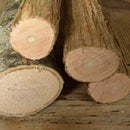Introduction: Reduce Diaper / Nappy Volume, Reduce Landfill. Squeemish Beware.
Here's some things you can do to drastically skinny that nappy before disposing of it.
But first let's think on this......
If you've got babies then use washable diapers / nappies. If you can't handle washing them yourself then sign up to a nappy wash service.
In the UK you could be saving around �500 a year if you switch to re-usables ( source1 )
3 billion nappies / diapers end up in UK landfill per year.
49 million diapers / nappies used in the US per day! ( )source2
Disposable diapers / nappies have a decomposition rate of 550 years ( source3)
So read on for a green way to reduce the volume of a diaper, if it's squeemish that your are, then go and look at the cake contest, actually have a look at my chocolate cake instructable and give it your vote ;) ......
Big thanks to Ropable for the image
Step 1: The Offending Article # 1. Pluggies Full-ups TM
No puritanical hoo-haar about not ever, ever,ever using disposables. If you've got bubs, then chances are you are going to use disposables at some time.
However, when you've got a diaper / nappy full of POO! ( there, I've said it ) flush that dump away before you wrap the diaper / nappy and bin it. Common sense - DON"T flush the whole thing, just the poo.
So let's have a talk about tweetle beatles. Um sorry parenthood seems to have addled my brain.
So lets have a closer look at a nappy / diaper, this one is full of pee.
The UK disposable nappy / diaper basically consists of celluslose 'fluff' from cotton pulp that, along with a super-absorbent material called SAP ( more on this later ) tries to hold the babies waste away from the skin. Polypropylene mesh holds this absorbent pad inside and to a greater or lesser extent also wicks fluid away from the babies skin. Elasticated barriers hold the nappy to the contours of the baby along with the stretch elastic waist tabs ( more on these in another instructable ). A high density polyethylene sheet stops the whole slop gushing out, in cheaper diapers this is evident, on the more expensive brands it's covered with yet another layer of polypropylene mesh. Apply cute graphics liberally and there you have an Eco time bomb just waiting to be 'primed'.
Step 2: What's Inside?
Eek! Better keep this out of landfill and on the compost heap where we can put it to good use.
Step 3: Disgorge That Diaper / Nappy
It's in the compost caddy and ready to serve as an excellent accelerator for the decomposition of garden and kitchen waste on the compost heap. This is due urea compounds - high in nitrogen found in pee, but there's an extra bonus, remember the SAP polymer I was talking about? It's good old super-absorbent sodium acrylate, used in garden centres as water gel in plant pots, as a fire retardant, soil erosion reducer. In short it's too good to bury in landfill.
Step 4: Before and After....
Estimating the weight of a morning diaper full of pee at 1 pound. The disgorged nappy weighs in at under two ounces. The volume reduction speaks for itself.
Step 5: Lastly
To conclude, please try to go over to a re-usable nappy system, they pay for themselves financially and environmentally. For the occasions that you do use disposables remember to reduce reuse recycle.
A viewpoint on the UK Environment Agencies amateur-ish life cycle analysis can be found here
Further reading on disposables and waste management can be found here .
Further reading on pee can be found here .
Finalist in the
Discover Green Science Fair for a Better Planet
Participated in the
The Instructables Book Contest













